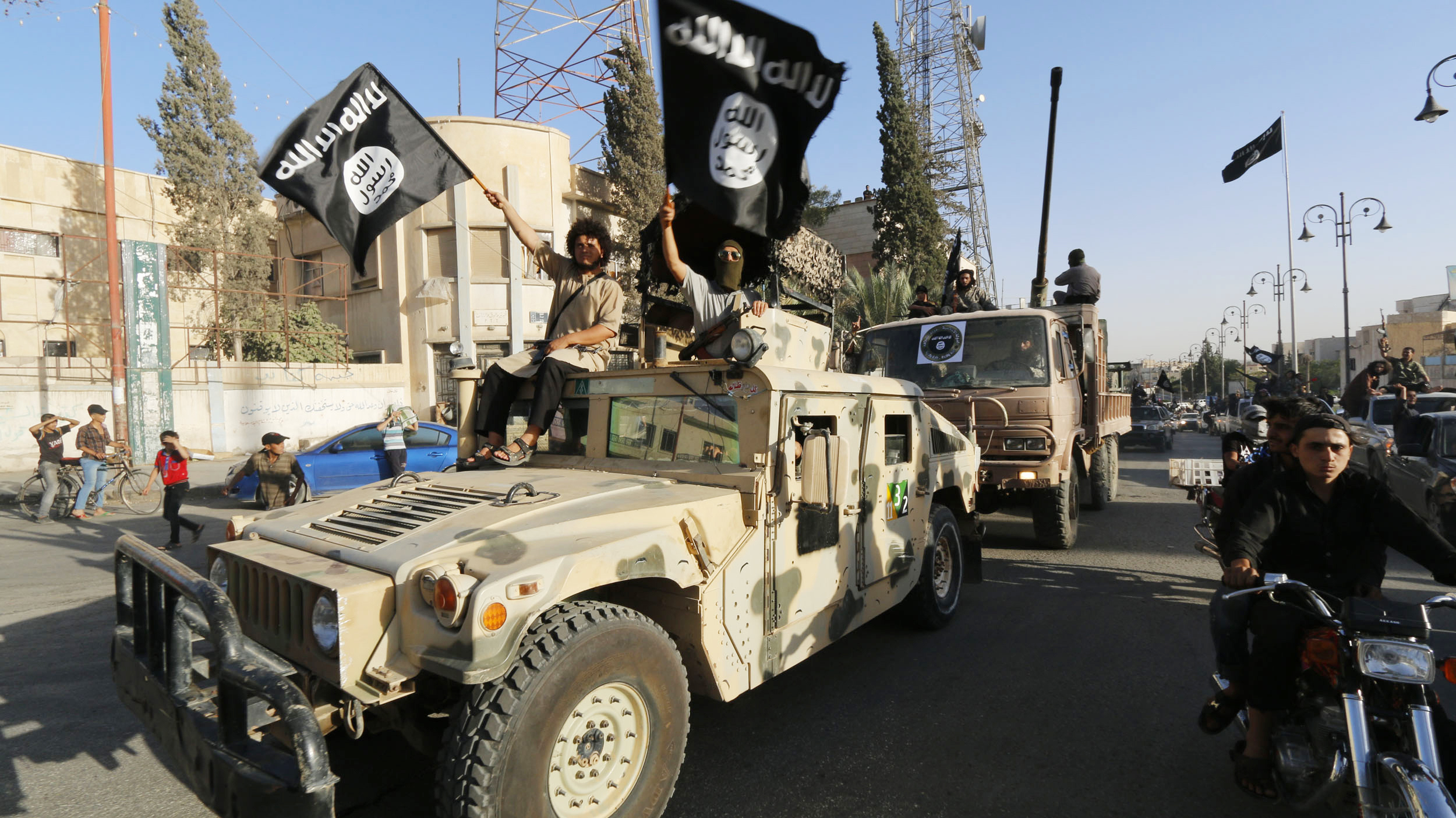Alwaght- With the withdrawal of US troops from Afghanistan, the composition of the American forces in the region is changing, and Pentagon moves indicate new plans for the region, particularly for Syria. While recent ISIS attacks in Afghanistan, Iraq and Syria have raised concerns about the re-emergence of the terrorist group, the evidence points to the White House setting the stage for such a project.
In a related report, the official Syrian news agency (SANA) recently reported that the occupying American forces transferred a group of ISIS terrorists from the prisons of the Syrian Kurdish militia, Syrian Democratic Forces (SDF), to their base in Ash-Shaddadi, south of Hasakah.
Also, on September 1, SANA, citing local sources in Al Yarubiyah town of Hasakah, reported that the American forces moved 30 trucks, including refrigerated trailers, into Syria from Iraq via the illegal Al-Walid border crossing, with their destination also being Al-Shadadi base.
In early August, reports suggested that the American forces were establishing a new military base in northeastern Syria, where militias allied to Washington will be based.
The new base will house a new force from Ash Shaddadi and the southern outskirts of Hasakah, especially from prominent Al-Jabour tribe. For this purpose, the Americans transferred a number of armed elements from Al-Tanf base to Ash Shaddadi base as a temporary training center for them. Around 800 were transferred, with their key mission being guarding the oilfields and American bases.
The US proximity to the Arab tribes of eastern Syria has been pursued as a planned project over the past year. After studying the demographic structure and recognizing the differences between the Arabs and the Kurds, it figured out that in a region dominated by Arab tribes, the Kurds have no future, and their military and political institutions have no place. Making mainly financial premises to tribal leaders, Washington began to recruit forces separate from the SDF. It is worth mentioning that a majority of the tribal fighters joined Ahrar Al-Sham and then Al-Nusra Front ranks after defecting from the Free Syrian Army, an opposition militia formed in the early years of the conflict. They also have records of membership of ISIS and now have openly joined the US forces.
According to Western media, only in SDF-operated Al-Hawl camp in the northeast, 62,000 ISIS family members are settled.
Another place hosting ISIS fighters and their families is Al-Guweiran prison in Hasakah. The prison accommodates thousands of ISIS terrorists from a variety of foreign countries. Over the past few months, American forces visited the prison.
Reportedly, a large number of terrorists escaped from the prison and camp in recent months. Local media assert that the SDF arranged their break from prison as the Kurdish group, ordered by the US, negotiated and coordinated with the Arab tribes in the region.
In the meantime, it is noteworthy that in parallel with the US movements in these areas, various parts of Syria and Iraq have witnessed resurgence in the ISIS attacks and sabotage.
Recently, ISIS claimed responsibility for an attack on a gas pipeline in Deir Ali town in Rif Damashq governorate, a Telegram channel affiliated with the terrorist group claimed recently. Also, media sources reported severe clashes between the Syrian army and ISIS elements in Daraa in the south and Homs in the north of Damascus. Clashes with Tahrir Al-Sham also took place in Idlib. The new confrontations show that the terrorists and their sponsors are active again in Syria.
The terrorists put their largest focus on Daraa to foil the central governments and Russian initiatives to bring peace to the province through deals without more fighting. Despite efforts by the government, assisted by Russia, remnants of terrorist factions are still in Daraa.
On the other hand, sabotage operations targeting power infrastructure and farms in Syria and ISIS attacks in Iraq have also been on the rise over the past months.
What looks clear is that destabilizing Afghanistan, Syria, and Iraq to block return of peace to them is Washington's main goal behind planning new supports to terrorist groups.
White House officials, on the other hand, are using ISIS to shore up their presence in eastern Syria and central Iraqi provinces to prevent the expulsion of their troops from the region and set up roadblocks ahead of position boost of such rival actors as Iran.
Retired General Joseph Votel, who commanded CENTCOM from March 2016 to March 2019, recently said that the US military reinforcement helps strengthen influence in eastern Syria and Iraq and "deter Iran."
But the reality is that Washington is using the continued occupation of eastern Syria to buy time for ISIS to rebuild its largely destroyed power. Jennifer Cafarella, a research fellow at the Institute for Study of War, in an article written for Understanding War website, suggests that while the American forces keep the Syrian government and allies' cleansing campaigns away from the east, ISIS finds room to regain power for a "second comeback."
Frequent American attacks on the Popular Mobilization Forces (PMF) of Iraq, who are leading in the anti-ISIS fight on the border with Syria, bears witness to this Washington policy. In March 2020, Kataeb Hezbollah, a powerful anti-terror force in Iraq, held that terrorist cells were receiving training inside the American bases in Syria, on the Syrian-Iraq borders, or on Iraqi-Jordan border areas.
Al-Ahed news network of Iraq reported, citing intelligence sources, the Americans use reconnaissance drones to collect precise data on the PMF units and hand them over to ISIS cells.



























